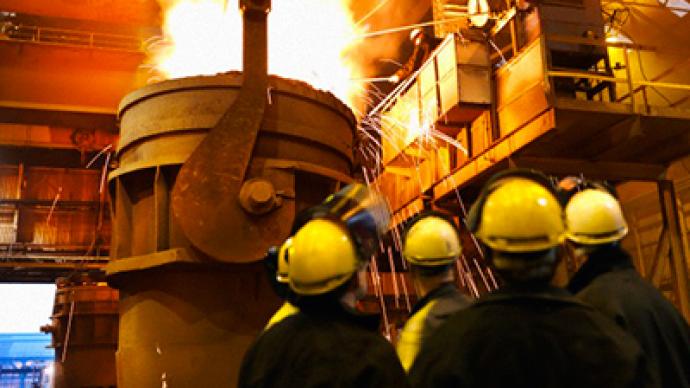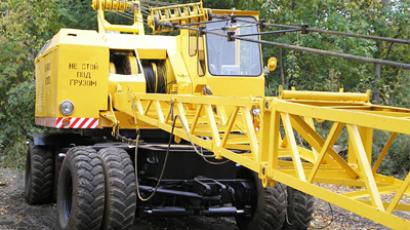Global steel demand outlook leaves Russian major looking home

Global steel demand is expected to remain subdued with geopolitical events in North Africa and the Middle East, fiscal austerity in Southern Europe and U.S., monetary tightening in China, and inflationary pressures proving strong headwinds
Fitch Ratings' is expecting slower growth in steel demand and production during the second half of 2011 but notes that the upside of this outlook is slowing capacity addition with global average capacity utilization at 81%. According to Rosstat, Russian steel production output has grown by 9.2% with 17.3 million tonnes of steel being produced during the first quarter of 2011 with an ensuing slowdown over April-May. Alex Fadyushin, Director of corporate analysis at FitchRatings, says the global steel industry slowdown will be moderated in Russia by domestic demand. “Although Russian major steel producers, being exporters of steel products, are exposed to the global slowdown, internal drivers are becoming more important to them. Major steel consumption sectors in Russia, like production of steel pipes, automotive industry and construction, face increasing demand. Investment activity of Russian companies during previous years will likely stimulate production of steel in H2 2011, as new production facilities are expected to be launched.”Global crude steel production increased 6% to1.4 billion metric tons in the first half of 2011 compared demand for finished steel up 6% to 1.3 billion metric tonnes in 2010. Fitch does not expect demand in developed nations to reach peak levels until 2013 given weakness in the construction sector. “Worldwide steel trade remained constrained in 2010 as a result of available capacity and short lead times at domestic mills at large importers, and declining cost advantages at some large exporters. Tight supply of low-cost iron ore and metallurgical coal will persist into 2013 resulting in raw materials prices that should exceed 2010 levels for the period. However, high exposure to construction in some developed countries will result in some producers being disadvantaged as a result of credit- or fiscal-induced austerity spending levels over the next 18-24 months.”Mining and metals producers are expected to cut CAPEX and refrain from extending investment targets to limit systematic and geopolitical risks in a more volatile macro outlook. Integrated steel producers will be shielded from the impact of iron ore and coking coal price pressures added Fadyushin, who noted this would see Russian producers generally outperform. “One of the main advantages of Russian major steel producers is integration in iron ore and coking coal production. It means that their exposure to volatile prices of the key raw materials is limited, as the major portion of iron ore and coking coal is produced by own production facilities. We see a certain progress of Russian companies in producing higher margin steel products. Increase of production of high value added products is likely to be beneficial, if Russian steelmaker follows the strategy of import replacement. In this case existing internal demand refocuses on the domestic producer.Automobile production in Russia will also spur demand according to Vasiliy Sein, Head of analysis at ASM Holding. “The growth of automotive production in Russia will certainly have a positive impact on metal and steel industry. It will result in growth of output in rolled steel. Our forecast for production in Russia this year is very positive with production to reach 1.713 million of cars and 197.242 trucks (of which 58% will be medium and heavy trucks weighing over 3.5 tonnes), and 38.741 buses. Last year the car production in Russia increased 93.5% to 1.4 million vehicles from 725.000 in 2009.”Russian infrastructure spending expected to underpin Russian steelmakers over the longer term says FitchRatings Fadyushin “Production in Russia benefits from a relatively high degree of captive domestic raw materials, which has allowed exports to be quite cost-competitive given the ruble’s depreciation over the last three. Utilization rates are expected to continue to run above 85%. The industry is concentrated in lower value-added production. Production is expected to grow about 6% in 2011 while domestic consumption is not expected to reach pre-crisis levels until 2012. The main drivers of domestic steel demand will include the APEC Vladivostok Summit in 2012, the Student Games in Kazan in 2013, and the Olympic Games in Sochi in 2014. Preparations for the world football championship in 2018 will underpin subsequent demand: Russia’s winning bid included plans to build 13 new stadiums and carry out extensive renovations at three Soviet-era venues. Margins over the next 12-18 months could be hurt by inflation rates approaching 10% as well as the strengthening rouble.” Georgy Buzhenitse, analyst at Deutsche Bank says the demand and prices on different types of steel products will depend on economic conditions and industrial output“Backed by global economic volatility and natural disaster in Australia where flooding damaged one of the biggest coking coal fields and led to a shortfall in raw material supply, prices on raw materials in Russia jumped 21% from 4200 roubles per tonnes in January 2011 to 5100 currently. China has significantly increased steel production which is another factor influencing prices. I do not expect continues growth of prices on raw materials given that no force major situation happens. The demand for flat-rolled steel used in automobile and pipe production has continued to grow supported by Federal Cash for Clunkers program and Gazprom pipe construction projects. Where by, the demand for steel used in construction remained unchanged, because the construction industry has not yet recovered and experiencing tough times due to economic situation. The construction activity has not accelerated and the projects in Sochi including infrastructure construction did not supported growth of steel output. For instance, the volume of steel used for Sochi Olympic Games was 0.4% of total steel production in 2010 and 1.6% of total cement production in the same year. The production output will depend on global and local economic situation. Our economists forecast 4.5% of GDP growth”














